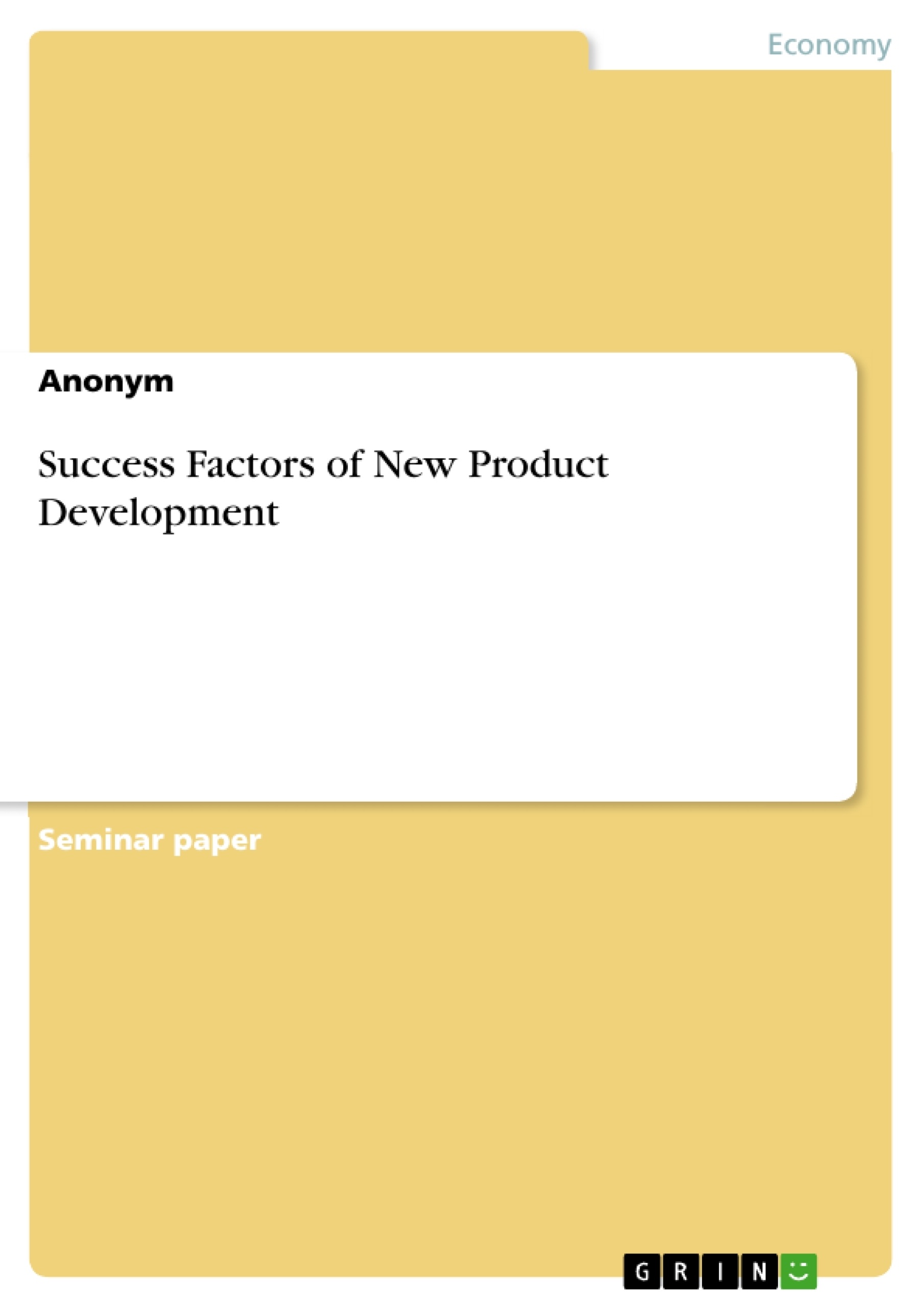In the last decades the way of doing business around the world has changed more than ever before. In our times it is not only important for companies to have a few products which sell good but to come up with successful new products from time to time. Especially in the consumer goods sector this applies very strongly. With shorter product-life-cycles companies are forced to change and invent new products or they will get pushed out of the market. The fact that customer preferences change very fast and the progress in technology is faster than ever along with the information being available better and more rapid is putting pressure on companies to come up with new products over and over again (Akgün, 2004, p. 1). Coming up with ideas for new products alone does not guarantee company performance to be above average. It is only by successful launches of new products that companies are able to turnover and profits. This is were the main problem is based.
Many products are brought to market every year but only a small number of them is seen as being successful. The many failures that come up are very expensive for companies since they might involve a lot of costs for research and development, market research, employees involved in the development and other types of cost related to New Product Development. According to Kotler et al. (2002, p. 500) a study estimated that new consumer packaged goods fail at a rate of 80 per cent.
Companies that try to stay competitive ask themselves what they can do to create successful new products. The factors that divide failures from successes are vital to managers around the world in order to stay in business. It is not always easy to understand the determinants that are crucial to the suc- cess of a product.
Inhaltsverzeichnis (Table of Contents)
- Why do we look at the success of new product launches?
- Problems in defining "success" and "New Product"
- Not all new products are similar or comparable
- How can we define success in this context?
- Critical Factors for the success of New Product Development
- Market orientation and customer integration
- Integration of customers into New Product Development
- Market orientation of New Product Development
- The relevance of the New Product Development process within the company
- Building cross functional teams
- Involvement and support of senior management
- Variation of the New Product Development Process
- On Time and On Budget
- Is the product really unique, different and better
- The importance of New Product Development in the future
Zielsetzung und Themenschwerpunkte (Objectives and Key Themes)
This seminar paper aims to explore the critical factors that influence the success of new product launches. It examines the challenges in defining "success" and "new product," considering the diverse types of products and their different market contexts. The paper then delves into various factors crucial for successful new product development, drawing upon empirical studies and research findings.
- Defining "success" and "new product" in the context of new product development
- The significance of market orientation and customer integration in new product development
- The role of the new product development process within the company and its impact on success
- The importance of on-time and on-budget product launches
- The necessity of product uniqueness, differentiation, and perceived value in the market
Zusammenfassung der Kapitel (Chapter Summaries)
- Why do we look at the success of new product launches? This chapter introduces the importance of new product development in today's dynamic business environment, highlighting the challenges of shorter product life cycles, rapid technological advancements, and changing customer preferences. It emphasizes that successful new product launches are crucial for company performance and financial success.
- Problems in defining "success" and "New Product": This chapter delves into the complexities of defining "success" and "new product" in the context of new product development. It explores the different interpretations of "new" products, considering product improvements, modifications, new brands, and market-specific variations. It also discusses the challenges in defining success beyond financial metrics, recognizing the importance of non-financial success factors.
- Critical Factors for the success of New Product Development: This chapter outlines various factors that contribute to the success of new product development, drawing upon empirical studies and research findings. It emphasizes the importance of market orientation, customer integration, and the role of the new product development process within the company. This chapter explores aspects such as cross-functional teams, senior management involvement, and process variations, while highlighting the importance of delivering products on time and within budget.
Schlüsselwörter (Keywords)
The key focus areas of this seminar paper are: new product development, success factors, market orientation, customer integration, product innovation, product life cycle, cross-functional teams, senior management support, on-time and on-budget launches, and product uniqueness and differentiation.
- Arbeit zitieren
- Anonym (Autor:in), 2005, Success Factors of New Product Development, München, GRIN Verlag, https://www.grin.com/document/64431



